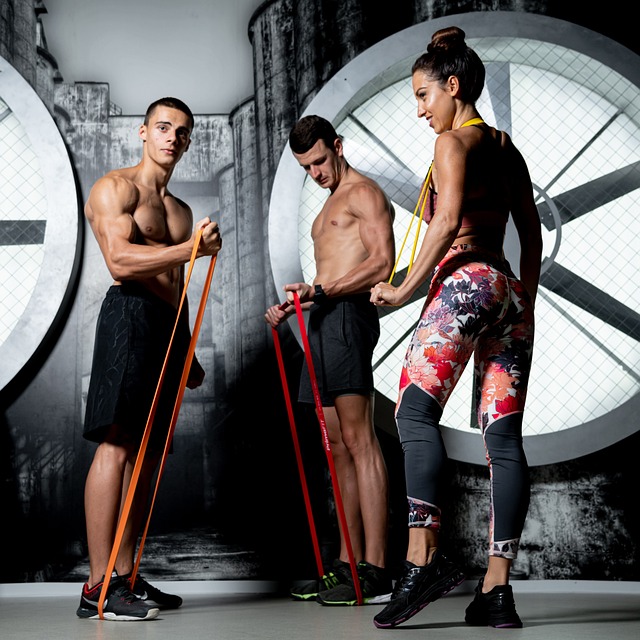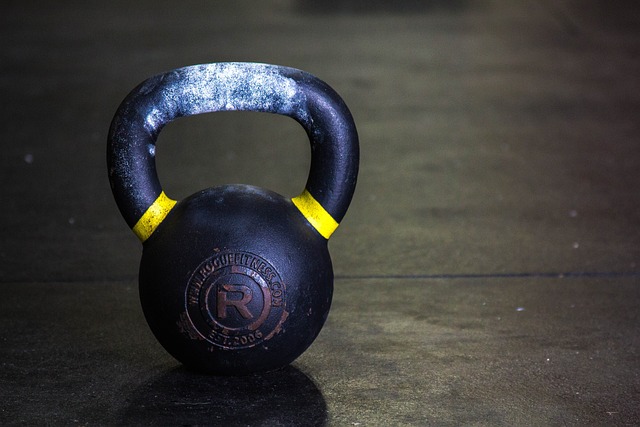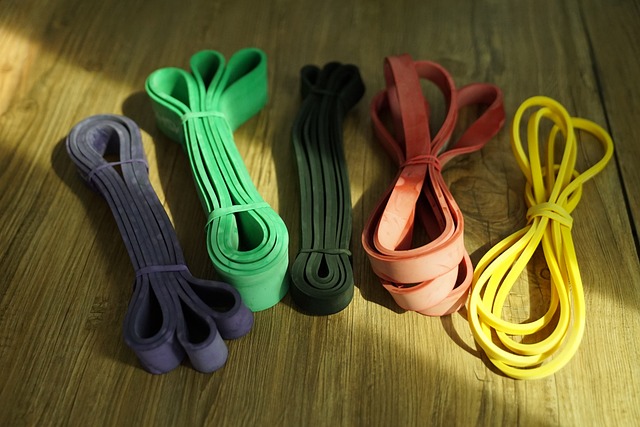The Benefits of Working Out at Home
Working out at home can be convenient, cost-effective, and rewarding. You don’t have to worry about gym memberships or commuting to get your workout in.
Plus, you can customize your workout space to fit your needs and preferences. Whether you have a small apartment or a spacious home gym, there are countless ways to make your at-home workout routine effective and enjoyable.
One of the biggest benefits of working out at home is the ability to save time and money. You don’t have to spend hours driving back and forth from the gym, waiting for equipment, or dealing with crowds.
Instead, you can maximize your time by fitting in a quick workout in between other tasks throughout the day. Additionally, not having to pay for an expensive gym membership can free up money for other important expenses or hobbies.
How to Get Started with Effective Home Workouts
Getting started with effective home workouts doesn’t have to be complicated or overwhelming. First, you need to find a suitable area in your home where you will feel comfortable exercising.
This could be a spare room, garage or even a corner of your living room. Make sure this space is well-ventilated and has enough room for you to move around freely.
Next, choose the right equipment that fits within your budget and fitness goals. If you’re just starting out, you may not need any equipment at all!
Bodyweight exercises such as push-ups, squats and lunges can provide an effective full-body workout without any equipment needed. However, if you’re interested in incorporating some gear into your routine resistance bands or dumbbells are great options that are relatively cheap and easy to store away when not in use.
Setting Up Your Workout Space
One of the great things about working out at home is that you get to create your own workout space. This means you can design an area that suits your needs and preferences, making it easier for you to stick to your routine. When setting up your workout space, keep the following tips in mind:
Finding a Suitable Area in Your Home
The first step is to find an area in your home where you can work out comfortably. This could be a spare bedroom, a garage, or even just a corner of your living room.
Consider factors such as lighting, ventilation, and noise level when choosing a spot. You’ll also need enough space for your equipment and movements.
Make sure there’s enough clearance around you so that you don’t bump into anything while exercising. A good rule of thumb is to have at least 6 feet of clear floor space around you.
Choosing the Right Equipment for Your Needs
The equipment you choose for your home workouts will depend on what type of exercises you plan on doing. If you’re just starting out, bodyweight exercises are a great place to begin since they don’t require any equipment at all. If you do want to use equipment, some basic items include resistance bands, dumbbells, and kettlebells.
Resistance bands are versatile and take up very little space; dumbbells come in various weights and sizes making them useful for many different exercises; kettlebells are great for building strength and endurance. Think about what type of workouts appeal to you most before investing in any equipment so that it doesn’t end up gathering dust in a corner somewhere.
Warm-Up and Stretching Routines
Before jumping into any exercise routine, it’s crucial to warm up your muscles and loosen your joints to prevent injury. Warming up helps increase your heart rate, circulation, and flexibility. It also prepares your mind and body for the upcoming workout, making it more effective.
Why Warming Up is Important
A proper warm-up routine can prevent muscle strain, sprains, and other injuries during a workout. It also helps improve performance by allowing for more significant range of motion in the joints and increasing blood flow to the muscles.
A good warm-up routine should involve light aerobic exercises that get the heart pumping and stretches that target major muscle groups used in the workout. The best approach is to start with low-intensity cardio exercises like jogging on the spot or jumping jacks.
These exercises help prepare your body for the upcoming workout by increasing blood flow, heart rate, and breathing rate. After a few minutes of cardio exercises, you can move on to stretching routines.
Simple Stretches to Prevent Injury
Stretching is essential for improving flexibility, range of motion in joints, reducing stiffness in muscles after workouts or prolonged sitting periods. It’s vital to focus on areas that will be targeted during the training session. To stretch effectively before exercising at home as a beginner, you can try simple static stretches such as hamstring stretch where you extend one leg forward bending from hips keeping back straight with hands overhead reaching towards toes then repeat on other leg; quad stretch where standing near support hold onto foot behind body then repeat on other leg; calf stretch where stand facing wall lean forward with hands against wall feet shoulder-width apart then step one foot back keeping heel down; hip flexor stretch where kneel on right knee left foot flat on floor in front of body while left knee is bent with hands on the left thigh then repeat on another side.
Overall, stretching and warming up before exercising at home are essential to help reduce the risk of injury and increase performance. Incorporating a warm-up routine into your workout plan will help ensure that you get the most out of your workouts in a safe and effective way.
Bodyweight Exercises
When starting out with home workouts, bodyweight exercises are a great way to build strength and endurance without needing any equipment. Bodyweight exercises use your own body weight as resistance to build muscle and improve fitness levels.
Basic Bodyweight Exercises for Beginners
Some basic bodyweight exercises that are great for beginners include squats, lunges, push-ups, planks, and sit-ups. Squats and lunges help strengthen your leg muscles while also working on balance and stability. Push-ups work on your chest, shoulders, triceps, and core muscles.
Planks are excellent for strengthening the core muscles while also improving posture. Sit-ups help in building abdominal strength.
It is important to start with the basic form of each exercise before adding any variations or increasing repetitions. This helps avoid injury as well as builds a strong foundation for more advanced exercises.
How to Progress and Make Them More Challenging
Once you have mastered the basic form of each exercise, it’s time to progress and make them more challenging. This can be done by adding variations such as jump squats or plyometric lunges which increase the intensity of the exercises. You can also increase the number of repetitions or sets that you do.
Another way to progress is by combining multiple bodyweight exercises into a circuit workout which increases cardiovascular endurance along with muscle building benefits. For example – 10 squats followed by 10 push-ups followed by 10 lunges – repeated three times.
As you progress through these different variations and combinations of bodyweight exercises, remember to always listen to your body and adjust accordingly if something feels too difficult or causes pain. With consistency and hard work, these basic movements can lead to impressive results in overall health and fitness levels.
Incorporating Equipment into Your Workouts
While bodyweight exercises are effective, adding equipment to your workout routine can provide additional resistance and help you progress towards your fitness goals. There are a variety of equipment options to choose from, but three common ones are resistance bands, dumbbells, and kettlebells.
Using Resistance Bands
Resistance bands come in various strengths and sizes. They are an excellent option for those who want to get a total body workout without using bulky equipment.
You can use resistance bands to do squats, bicep curls, chest presses, and much more. Resistance bands also allow you to easily increase or decrease the tension as needed by simply holding the band closer or further away from your body.
To use resistance bands effectively in your workouts, start by selecting the right strength for your needs. Most sets of resistance bands come with different levels of tension indicated by color codes or labels such as “light” or “heavy.” Choose the level that will provide enough resistance to challenge you while still allowing you to perform each exercise with proper form.

Using Dumbbells
Dumbbells are another great option for adding resistance to your workouts. They come in various weights and can be used for countless exercises targeting specific muscle groups such as bicep curls or lunges.
If you’re just starting out with dumbbells, consider purchasing a set with adjustable weights so that you can increase the weight as needed without having to buy multiple sets over time. When selecting weights for specific exercises, choose a weight that allows you to complete 8-12 reps per set while still maintaining proper form.
Using Kettlebells
Kettlebells might seem like an intimidating piece of equipment, but they offer a unique way to train your entire body with one tool. Kettlebells come in different weights and allow you to perform exercises like swings, snatches, and Turkish get-ups that target multiple muscle groups at once.
If you’re new to kettlebells, start with a lighter weight and focus on mastering the correct technique for each exercise before increasing the weight. Kettlebells can be expensive compared to other equipment options, but there are affordable brands available online or at sporting goods stores.

Tips for Buying Affordable Equipment
Adding equipment to your home gym doesn’t have to break the bank. Here are some tips for buying affordable equipment:
Buy Used
You can often find used equipment for sale on websites like Craigslist or Facebook Marketplace. If possible, ask to try out the equipment before buying it so that you can ensure it’s in working order and suitable for your needs.
Shop Sales
If you’re in the market for new equipment, keep an eye out for sales at sporting goods stores or online retailers. Many retailers offer discounts around major holidays or during seasonal clearance events.
Start Small
You don’t need a full home gym right off the bat. Start with a few key pieces of equipment such as resistance bands or dumbbells and gradually add more over time as needed. Incorporating equipment into your home workouts can help keep your routine challenging and effective towards reaching your fitness goals.
Resistance bands, dumbbells, and kettlebells are excellent choices that won’t take up too much space in your home. Just remember when purchasing any fitness gear always choose quality over price!
Creating a Workout Plan
Working out at home can be a great way to stay in shape without having to deal with the hassle of going to the gym. However, it’s important to have a plan in place for your workouts if you want to see real progress.
The first step is setting achievable goals that are realistic for your fitness level and schedule. When setting goals, it’s important to be specific about what you want to achieve and when you want to achieve it.
For example, instead of saying “I want to lose weight,” try setting a goal like “I want to lose 5 pounds in the next 4 weeks.” This gives you something specific and measurable to work towards. Once you have your goals in place, it’s time to structure a routine that works for you.
You don’t need fancy equipment or hours of free time each day – even just 20-30 minutes per day can make a big difference if you’re consistent. Consider scheduling your workouts at the same time each day so that they become part of your routine and are easier to stick with over time.
Setting Achievable Goals
One key aspect of creating an effective workout plan is setting achievable goals. This means choosing goals that are challenging yet realistic based on your current fitness level and lifestyle.
When setting fitness goals, consider both short-term and long-term objectives. Short-term objectives might include things like completing a certain number of push-ups or running for a certain amount of time without stopping.
Long-term objectives might include things like improving overall strength or losing a certain amount of weight over several months. It’s also important not to get too caught up in other people’s expectations or compare yourself too much with others on social media who may have different body types, lifestyles, or accessibilities than yours- as everyone has their own journey towards their own healthiest self.
Structuring a Routine That Works for You
When structuring your workout routine, it’s important to choose exercises and activities that you enjoy and that fit into your lifestyle. This will make it easier to stick with your plan and stay motivated over time.
Consider incorporating a variety of exercises into your routine so that you work all of the major muscle groups. This might include bodyweight exercises like squats, lunges, and push-ups, as well as cardio activities like jogging or jumping jacks.
It’s also important to give yourself rest days in between workouts so that your muscles have time to recover. On rest days, you can still engage in light physical activity like walking or stretching to keep your body moving without putting too much strain on your muscles.
Remember, the key to creating an effective workout plan is finding something that works for you and sticking with it over time. With patience, consistency, and the right mindset- working out at home can be an excellent way to improve both physical fitness and mental health.
Staying Motivated and Accountable: Pushing Through the Tough Times
One of the biggest challenges of working out at home is staying motivated. There are no trainers to push you, no gym buddies to spot you, and no flashy equipment to distract you. But with a little discipline and creativity, there are many ways you can stay on track.
Finding a Workout Buddy or Accountability Partner: The Power of Teamwork
One of the best ways to stay motivated is by finding a workout buddy or accountability partner. Whether it’s a friend, family member, or colleague, having someone else to work out with can make all the difference.
Not only do they help keep you accountable, but they provide encouragement and support when you’re feeling low. If finding someone in person isn’t feasible for your situation, consider connecting with others online.
There are many online forums and communities where people come together to share their fitness journeys. Social media also provides an opportunity for building connections with like-minded individuals who can offer support and motivation.
Celebrating Small Victories Along the Way: A Little Encouragement Goes a Long Way
Celebrating small victories along your fitness journey can be incredibly rewarding and motivating. Whether it’s hitting a new personal best on an exercise or completing your first full-body workout routine without getting winded; these accomplishments should be celebrated!
Remember that progress doesn’t happen overnight; it takes time and dedication. That’s why it’s important to recognize each step that brings us closer towards our goals.
Conclusion
Congratulations, you’ve taken the first step towards a healthier, happier you by deciding to start working out at home! Remember, the most important thing is to start small and build up gradually.
Don’t push yourself too hard and risk injury or burnout. Instead, focus on making consistent progress and celebrating each small victory along the way.
Here are some final tips and advice to help you get started with effective home workouts: Firstly, don’t neglect your warm-up and stretching routines.
These may seem like small details, but they will help prevent injury and improve your overall performance during your workout. Start with some light cardio to get your blood flowing, then move onto basic stretches for each muscle group.
Next, find ways to make your workouts fun and enjoyable so that you’re more likely to stick with them long-term. Try new exercises or incorporate music into your routine for an added boost of motivation.
Don’t be too hard on yourself if you miss a workout or have an off day. Remember that consistency is key when it comes to achieving fitness goals – one missed workout isn’t going to undo all of your progress.
With these tips in mind, you’re well on your way towards establishing a successful home workout routine that will improve both your physical and mental health in the long run. Keep pushing yourself towards achieving those goals – you’ve got this!
